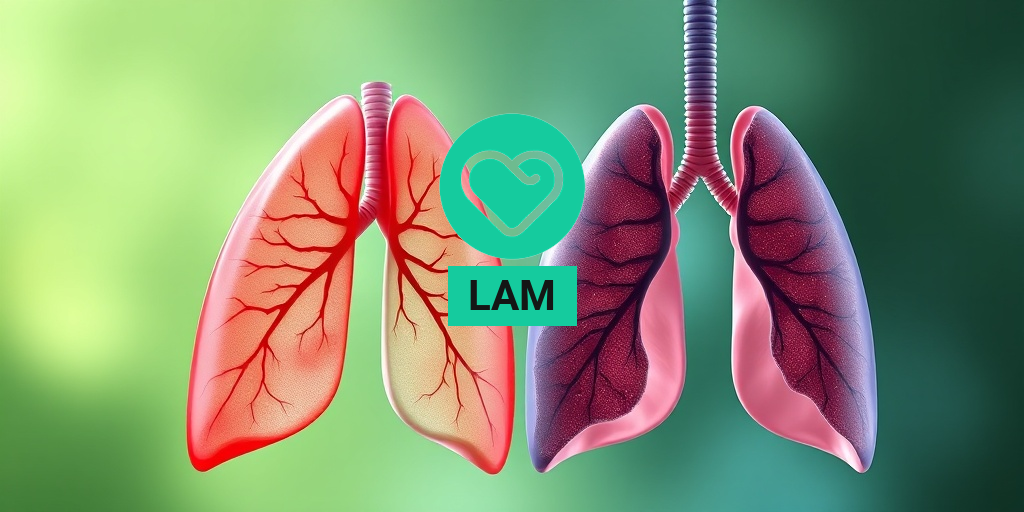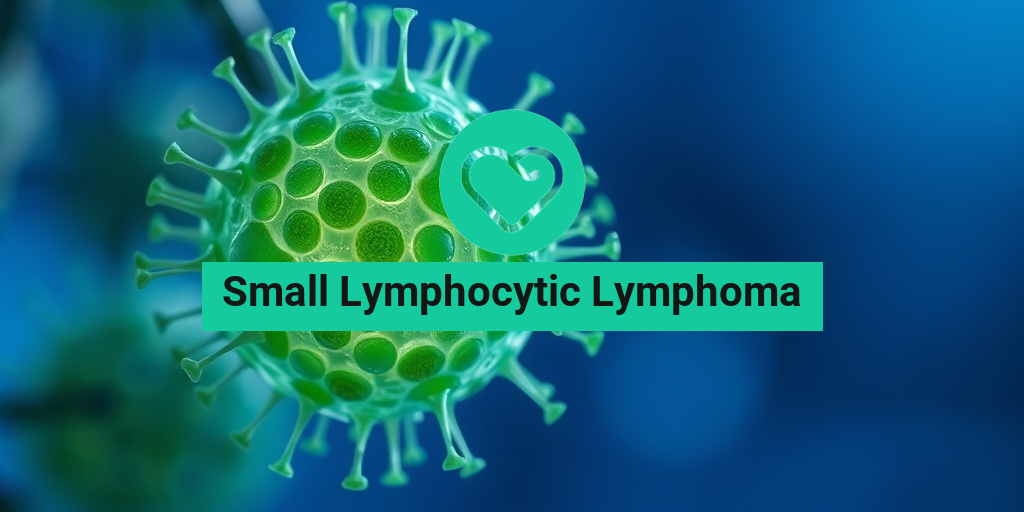What Is LAM?
LAM, or Lymphangioleiomyomatosis, is a rare and progressive lung disease that primarily affects women, particularly those of childbearing age. This condition is characterized by the abnormal growth of smooth muscle cells in the lungs, leading to the formation of cysts and the obstruction of airways. While the exact cause of LAM remains unclear, it is often associated with Tuberous Sclerosis Complex (TSC), a genetic disorder that causes non-cancerous tumors to grow in various organs.
Understanding the Mechanism of LAM
The pathophysiology of LAM involves the proliferation of atypical smooth muscle cells, which can invade the lung parenchyma and lymphatic system. This abnormal growth can lead to the destruction of lung tissue, resulting in a decline in lung function over time. As the disease progresses, patients may experience significant respiratory issues, making early diagnosis and management crucial.
Who Is at Risk for LAM?
While LAM can occur in any woman, certain factors may increase the risk:
- Gender: LAM predominantly affects women.
- Age: Most cases are diagnosed in women between the ages of 20 and 40.
- Genetic predisposition: Women with Tuberous Sclerosis Complex are at a higher risk.
LAM Symptoms
The symptoms of LAM can vary widely among individuals, and they may develop gradually over time. Recognizing these symptoms early can lead to timely intervention and management. Here are some common symptoms associated with LAM:
Respiratory Symptoms
One of the most prominent features of LAM is its impact on lung function. Patients may experience:
- Shortness of breath: This may occur during physical activity or even at rest as the disease progresses.
- Chronic cough: A persistent cough that may produce sputum.
- Chest pain: Discomfort or pain in the chest area can occur, particularly during exertion.
Other Symptoms
In addition to respiratory issues, LAM can manifest in other ways:
- Fatigue: Many patients report feeling unusually tired or fatigued.
- Fluid accumulation: Some may experience lymphatic fluid buildup, leading to swelling in the abdomen or legs.
- Hormonal changes: Irregular menstrual cycles can occur, particularly in women with TSC.
When to Seek Medical Attention
If you or someone you know is experiencing symptoms that may be indicative of LAM, it is essential to seek medical advice promptly. Early diagnosis can significantly improve the management of the disease and enhance the quality of life. Healthcare providers may conduct imaging tests, pulmonary function tests, and genetic testing to confirm a diagnosis of LAM.
Conclusion
Understanding LAM is crucial for those affected and their families. While the disease can be challenging to manage, resources like Yesil Health AI (yesilhealth.com) can provide valuable, evidence-based health answers and support. If you suspect you may have LAM or are experiencing related symptoms, don’t hesitate to reach out to a healthcare professional for guidance. Remember, early intervention is key! 🌟

LAM Causes
LAM, or Lymphangioleiomyomatosis, is a rare lung disease that primarily affects women, particularly those of childbearing age. Understanding the causes of LAM is crucial for early diagnosis and effective management. While the exact cause of LAM remains unclear, several factors have been identified that contribute to its development.
Genetic Factors
One of the primary causes of LAM is genetic mutations. Most cases of LAM are associated with mutations in the TSC1 or TSC2 genes, which are responsible for a condition known as tuberous sclerosis complex (TSC). TSC is a genetic disorder that causes non-cancerous tumors to grow in various organs, including the lungs. In women with TSC, the risk of developing LAM increases significantly.
Hormonal Influences
Hormones may also play a role in the onset of LAM. The disease predominantly affects women, and many patients report that their symptoms worsen during pregnancy or with the use of hormonal therapies. This suggests that estrogen may influence the growth of LAM cells, leading to the progression of the disease.
Environmental Factors
While genetic and hormonal factors are significant, environmental influences cannot be overlooked. Some studies suggest that exposure to certain environmental toxins or pollutants may trigger or exacerbate LAM symptoms. However, more research is needed to establish a definitive link between environmental factors and the onset of LAM.
Immune System Dysfunction
Another area of interest is the role of the immune system in LAM. Some researchers believe that an abnormal immune response may contribute to the development of the disease. This dysfunction could lead to the proliferation of LAM cells, causing damage to lung tissue and resulting in the characteristic symptoms of the disease.
LAM Risk Factors
Identifying the risk factors associated with LAM can help in early detection and management of the disease. While anyone can develop LAM, certain factors increase the likelihood of its occurrence.
Gender and Age
The most significant risk factor for LAM is being female. The disease is extremely rare in men, with the majority of cases occurring in women between the ages of 20 and 40. This age range coincides with the reproductive years, further highlighting the potential influence of hormonal factors.
Genetic Predisposition
As mentioned earlier, women with tuberous sclerosis complex (TSC) are at a higher risk of developing LAM. If you have a family history of TSC or LAM, your risk may be elevated. Genetic counseling can be beneficial for those with a family history of these conditions.
Pregnancy and Hormonal Changes
Pregnancy is a significant risk factor for LAM. Many women report that their symptoms either began or worsened during or after pregnancy. Hormonal changes during this time may trigger the growth of LAM cells, leading to increased lung damage.
Previous Lung Conditions
Individuals with a history of lung conditions, such as asthma or chronic obstructive pulmonary disease (COPD), may also be at an increased risk for developing LAM. These pre-existing conditions can compromise lung function and may exacerbate the symptoms of LAM.
Environmental Exposures
While research is still ongoing, some studies suggest that exposure to certain environmental toxins, such as those found in industrial settings, may increase the risk of developing LAM. Maintaining a healthy environment and minimizing exposure to pollutants can be beneficial for lung health.
In summary, while the exact causes of LAM are still being studied, understanding the potential risk factors can aid in early detection and management. If you or someone you know is experiencing symptoms associated with LAM, such as shortness of breath, cough, or chest pain, it is essential to seek medical advice promptly. 🩺

LAM Diagnosis
Lymphangioleiomyomatosis (LAM) is a rare lung disease that primarily affects women, particularly those of childbearing age. Diagnosing LAM can be challenging due to its rarity and the overlap of symptoms with other respiratory conditions. Here, we will explore the diagnostic process for LAM, including the key tests and evaluations involved.
Understanding the Symptoms
The first step in diagnosing LAM is recognizing its symptoms. Common symptoms include:
- Shortness of breath: This may occur during physical activity or even at rest.
- Chronic cough: A persistent cough that may produce little or no mucus.
- Chest pain: Discomfort or pain in the chest area.
- Fatigue: A general feeling of tiredness that doesn’t improve with rest.
If you experience these symptoms, it’s essential to consult a healthcare professional for further evaluation.
Medical History and Physical Examination
During the initial consultation, your doctor will take a detailed medical history and perform a physical examination. They will ask about:
- Your symptoms and their duration.
- Any family history of lung diseases.
- Previous medical conditions or treatments.
This information helps the doctor determine the likelihood of LAM and decide on the next steps for diagnosis.
Diagnostic Tests for LAM
Several tests can help confirm a diagnosis of LAM:
- Imaging Studies: A high-resolution computed tomography (HRCT) scan of the chest is crucial. It can reveal characteristic cystic changes in the lungs that are indicative of LAM.
- Pulmonary Function Tests (PFTs): These tests measure lung capacity and function, helping to assess the severity of the disease.
- Biopsy: In some cases, a lung biopsy may be necessary to examine lung tissue for the presence of LAM cells.
- Genetic Testing: Since LAM is often associated with tuberous sclerosis complex (TSC), genetic testing may be performed to identify mutations in the TSC1 or TSC2 genes.
Once these tests are completed, your healthcare provider will analyze the results to confirm a diagnosis of LAM.
LAM Treatment Options
While there is currently no cure for LAM, various treatment options can help manage symptoms and improve quality of life. The choice of treatment depends on the severity of the disease and individual patient factors.
Medications
Several medications have shown promise in treating LAM:
- Sirolimus (Rapamune): This medication is an immunosuppressant that has been found to stabilize lung function in some patients with LAM.
- Bronchodilators: These can help open the airways and improve breathing.
- Oxygen Therapy: For those with low oxygen levels, supplemental oxygen can help alleviate symptoms and improve overall well-being.
Monitoring and Supportive Care
Regular monitoring is essential for managing LAM. This may include:
- Routine Check-ups: Regular visits to a pulmonologist to monitor lung function and overall health.
- Physical Therapy: Pulmonary rehabilitation can help improve physical endurance and quality of life.
- Nutritional Support: Maintaining a healthy diet is crucial for overall health and can help manage symptoms.
Surgical Options
In severe cases of LAM, surgical interventions may be considered:
- Lung Transplant: For patients with advanced disease and significant lung impairment, a lung transplant may be the best option.
- Video-Assisted Thoracoscopic Surgery (VATS): This minimally invasive surgery can be used to remove cysts or other affected lung tissue.
Each treatment plan should be tailored to the individual, taking into account the severity of the disease and the patient’s overall health. It’s essential to work closely with a healthcare team experienced in managing LAM to determine the best course of action.

LAM Living with the Condition
Lymphangioleiomyomatosis (LAM) is a rare lung disease that primarily affects women, particularly those of childbearing age. Living with LAM can be challenging, but understanding the condition and its implications can empower patients and their families. In this section, we will explore what it means to live with LAM, the symptoms, and the available support systems.
Understanding LAM: What You Need to Know
LAM is characterized by the abnormal growth of smooth muscle cells in the lungs, leading to cyst formation and progressive lung damage. This condition can cause a range of symptoms, including:
- Shortness of breath: This is often the most debilitating symptom, making everyday activities challenging.
- Chronic cough: A persistent cough can be a constant reminder of the condition.
- Chest pain: Some patients experience discomfort or pain in the chest area.
- Fatigue: The energy drain from managing symptoms can lead to significant fatigue.
Managing Symptoms and Treatment Options
While there is currently no cure for LAM, several treatment options can help manage symptoms and improve quality of life. These include:
- Medications: Drugs such as sirolimus have shown promise in slowing disease progression.
- Oxygen therapy: For those with severe shortness of breath, supplemental oxygen can be a lifesaver.
- Lung transplantation: In advanced cases, a lung transplant may be considered as a last resort.
It’s essential for patients to work closely with their healthcare team to develop a personalized treatment plan. Regular check-ups and monitoring can help catch any complications early.
Emotional and Psychological Support
Living with a chronic condition like LAM can take a toll on mental health. Many patients experience feelings of isolation, anxiety, or depression. Here are some ways to seek support:
- Support groups: Connecting with others who understand your experience can provide comfort and encouragement.
- Counseling: Professional therapy can help patients cope with the emotional challenges of living with LAM.
- Education: Learning more about LAM can empower patients and reduce feelings of helplessness.
Additionally, family and friends play a crucial role in providing emotional support. Open communication about the challenges faced can strengthen these relationships and foster understanding.
LAM Research and Future Directions
Research into LAM is ongoing, with scientists and medical professionals striving to better understand the disease and develop more effective treatments. This section will delve into the current state of LAM research and what the future may hold.
Current Research Initiatives
Several organizations and institutions are dedicated to advancing LAM research. Key areas of focus include:
- Genetic studies: Understanding the genetic mutations associated with LAM can lead to targeted therapies.
- Clinical trials: New medications and treatment protocols are continually being tested to find more effective options for patients.
- Pathophysiology research: Investigating how LAM develops and progresses can provide insights into potential preventative measures.
Future Directions in LAM Treatment
The future of LAM treatment looks promising, with several potential advancements on the horizon:
- Personalized medicine: Tailoring treatments based on individual genetic profiles may enhance efficacy and reduce side effects.
- Innovative therapies: Researchers are exploring new drug compounds and delivery methods that could improve patient outcomes.
- Collaboration: Increased collaboration between researchers, healthcare providers, and patient advocacy groups is essential for accelerating progress.
As awareness of LAM grows, so does the potential for breakthroughs in treatment and management. Patients and families are encouraged to stay informed about the latest research developments and participate in clinical trials when possible.
In conclusion, living with LAM presents unique challenges, but with the right support and ongoing research, there is hope for improved management and treatment options in the future. 🌟

Frequently Asked Questions about LAM
What is LAM?
LAM stands for Lymphangioleiomyomatosis, a rare lung disease that primarily affects women. It is characterized by the abnormal growth of smooth muscle cells in the lungs, leading to respiratory issues.
What are the symptoms of LAM?
- Shortness of breath, especially during physical activity
- Chronic cough
- Chest pain
- Fatigue
- Recurrent lung infections
How is LAM diagnosed?
Diagnosis of LAM typically involves a combination of medical history, physical examination, imaging tests such as CT scans, and lung function tests. A biopsy may also be performed to confirm the diagnosis.
What treatments are available for LAM?
While there is no cure for LAM, treatments focus on managing symptoms and slowing disease progression. Options may include:
- Medications to improve lung function
- Oxygen therapy
- Lung transplantation in severe cases
Can LAM be inherited?
In some cases, LAM is associated with a genetic condition called Tuberous Sclerosis Complex (TSC). However, most cases occur sporadically and are not inherited.
What lifestyle changes can help manage LAM?
Individuals with LAM can benefit from:
- Regular exercise tailored to their abilities
- A balanced diet to maintain overall health
- Avoiding smoking and exposure to secondhand smoke
- Staying up-to-date with vaccinations to prevent respiratory infections
Where can I find support for LAM?
Support groups and organizations dedicated to LAM can provide valuable resources and community connections. Websites like the LAM Foundation offer information, support, and advocacy for those affected by the disease.
Is there ongoing research for LAM?
Yes, there is ongoing research aimed at understanding LAM better and developing new treatments. Clinical trials are often available for patients who wish to participate.
How can I raise awareness about LAM?
Raising awareness about LAM can be done through:
- Participating in awareness events
- Sharing information on social media
- Engaging with local health organizations
What should I do if I suspect I have LAM?
If you experience symptoms associated with LAM, it is important to consult a healthcare professional for evaluation and potential diagnosis. Early intervention can help manage the condition effectively.




